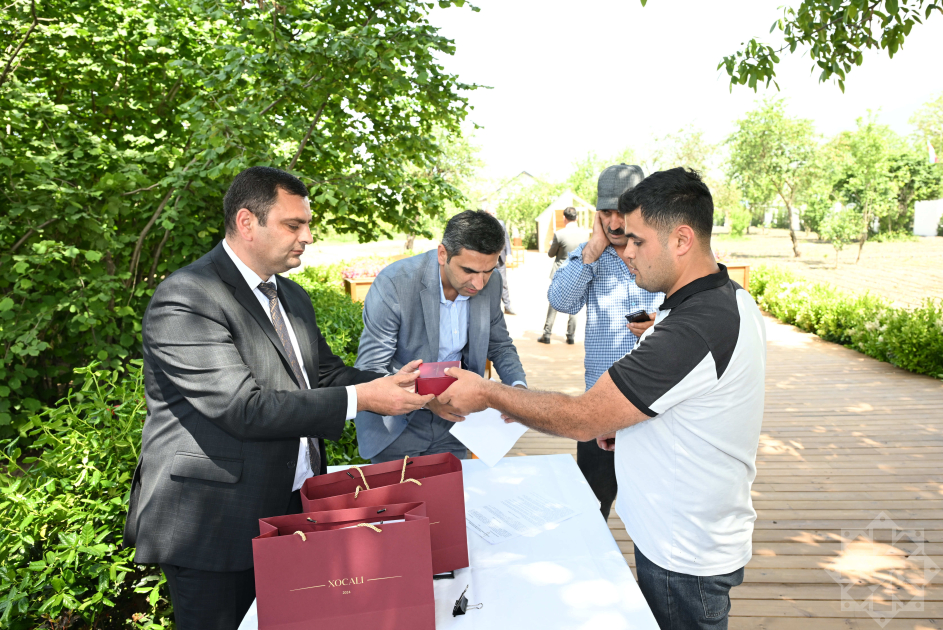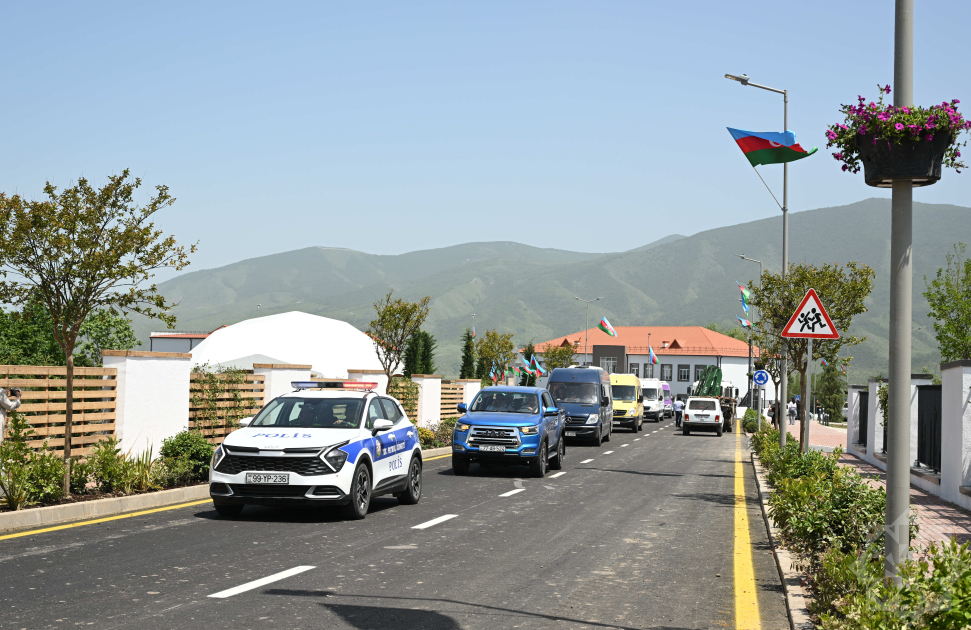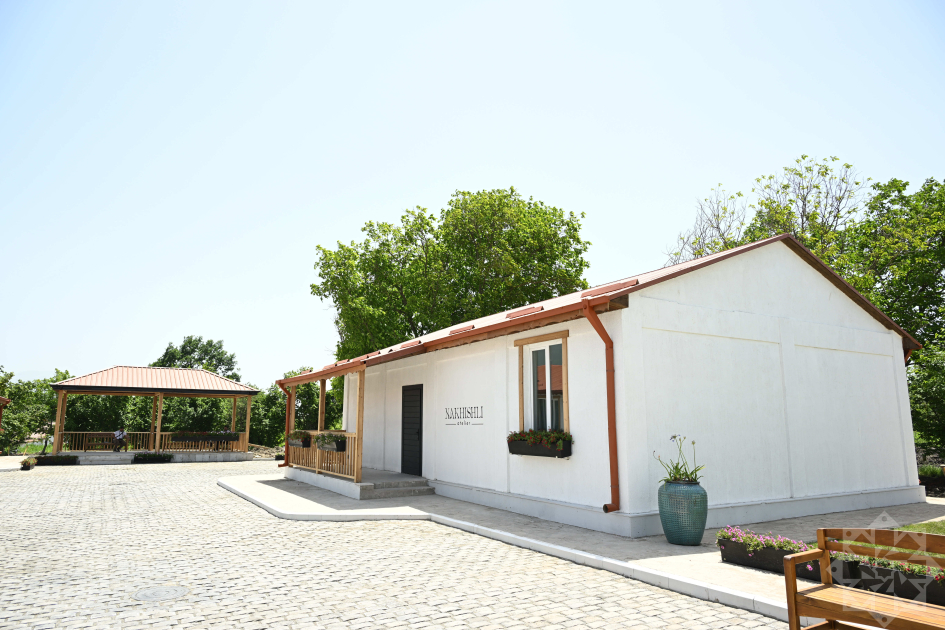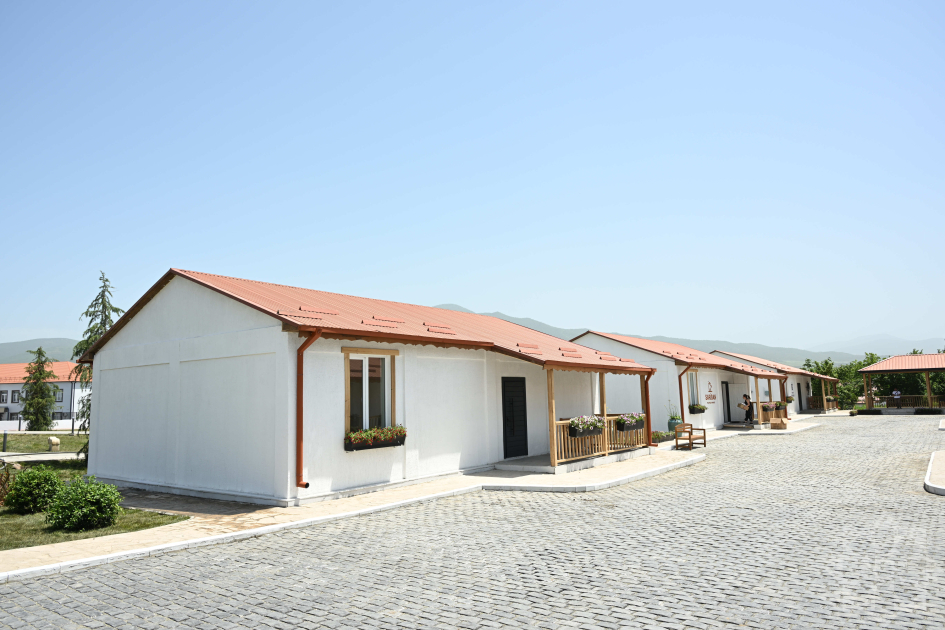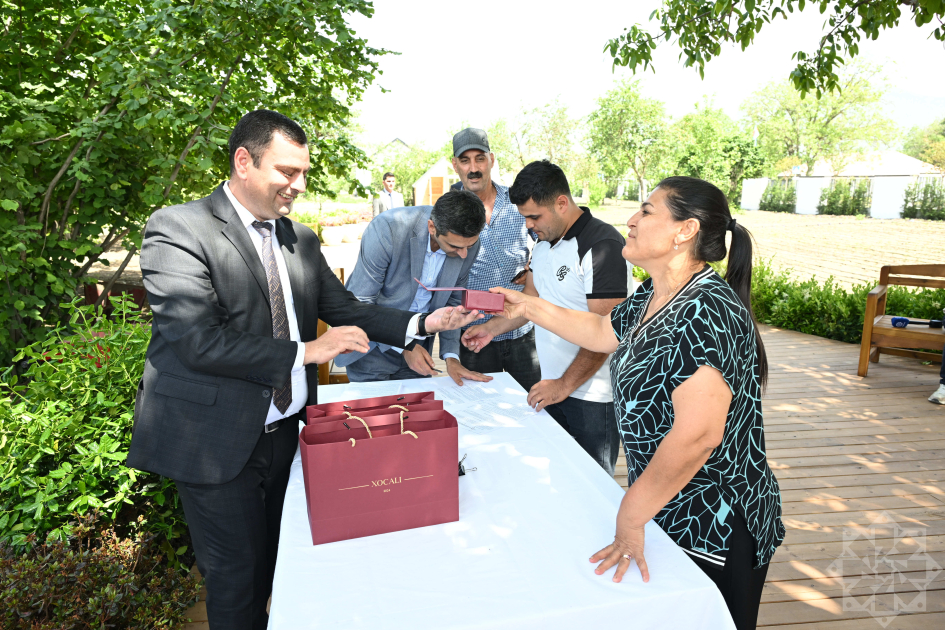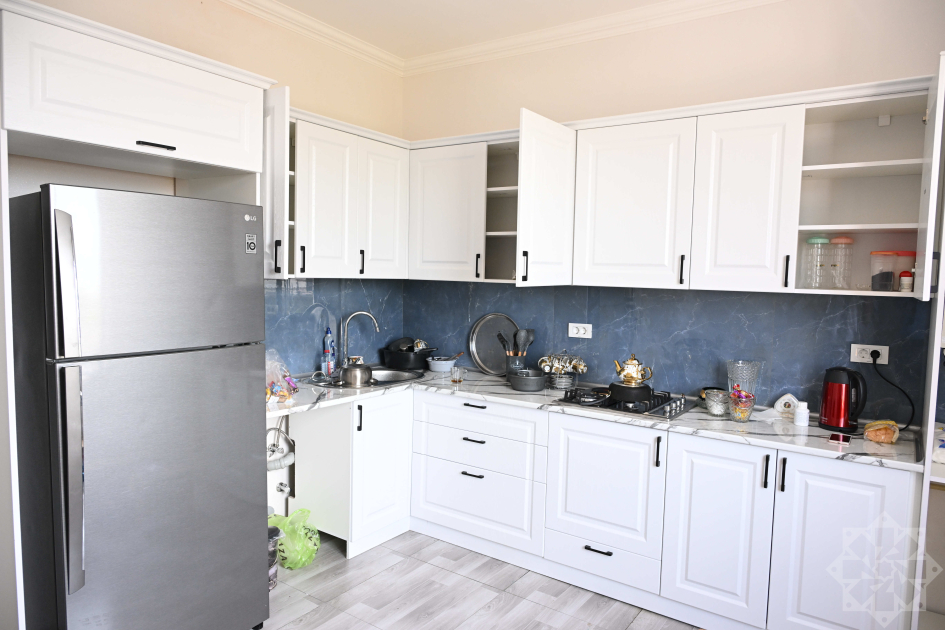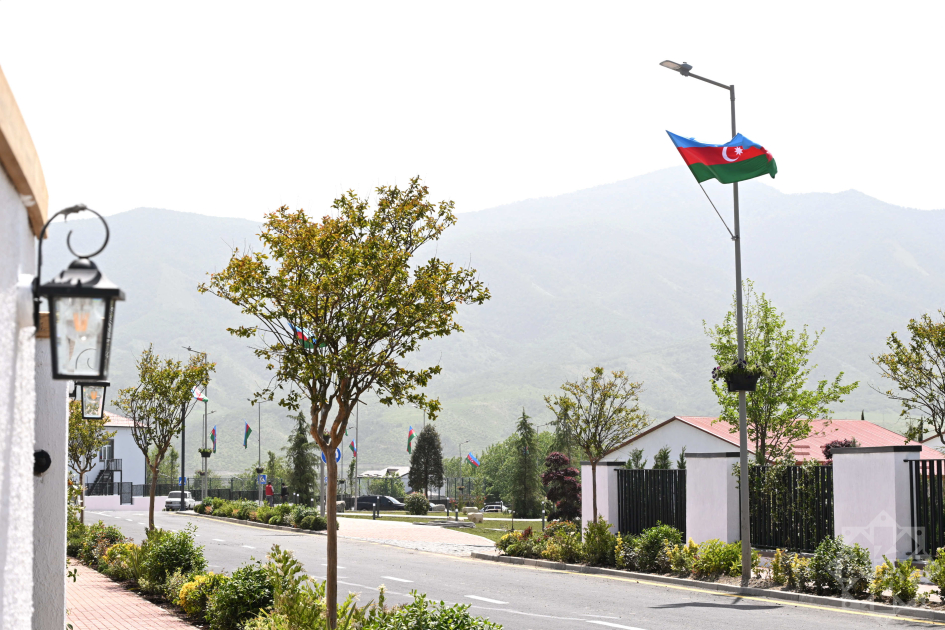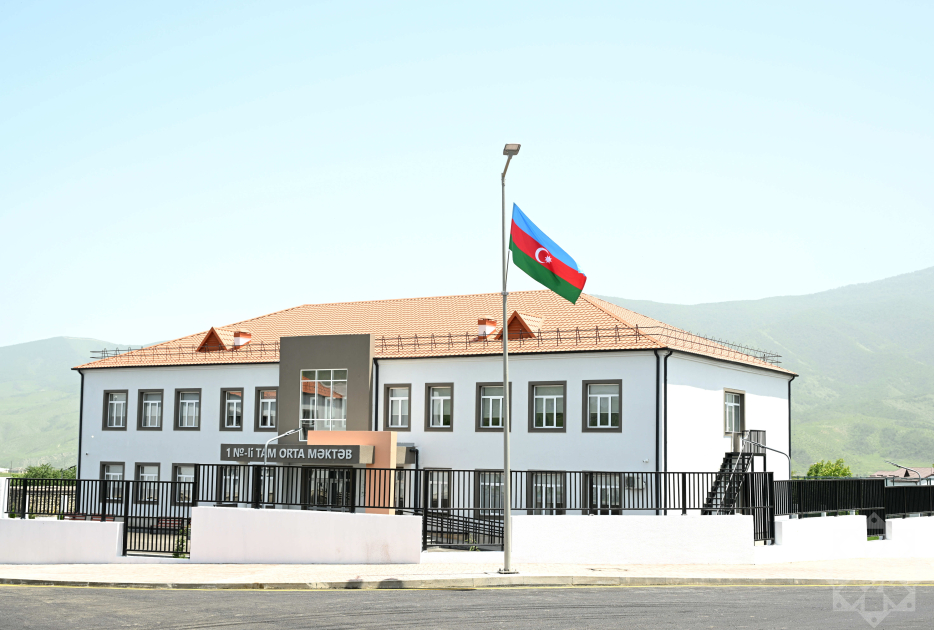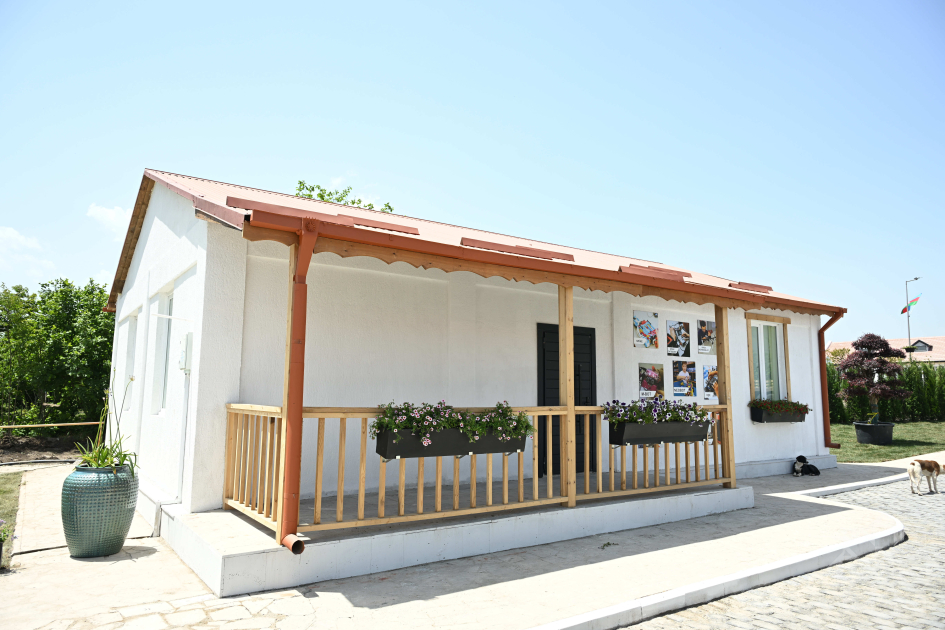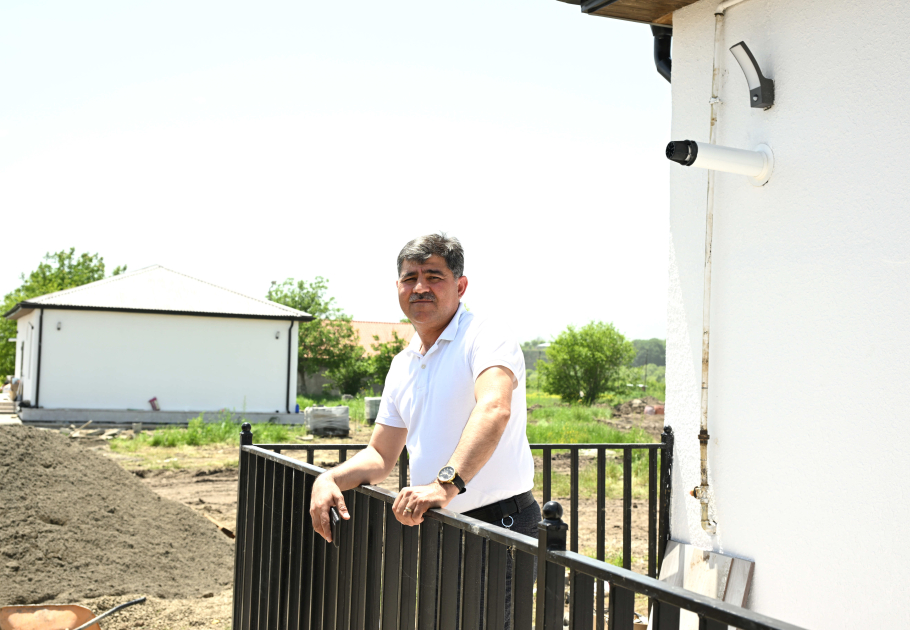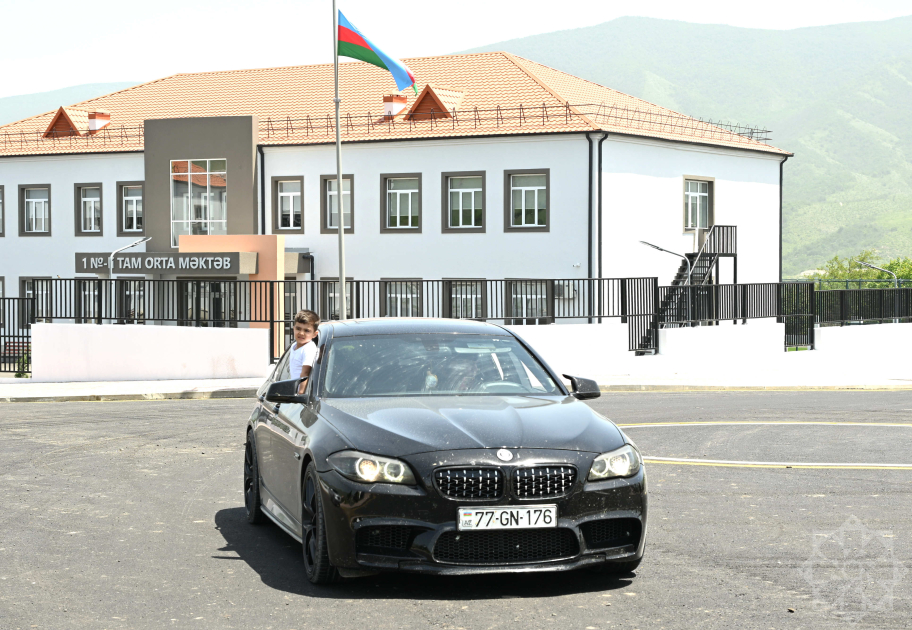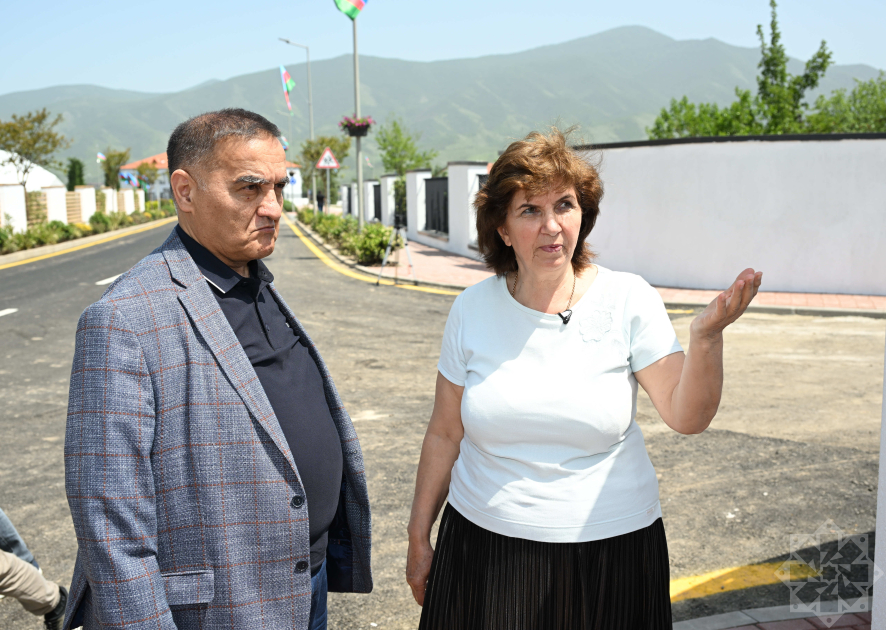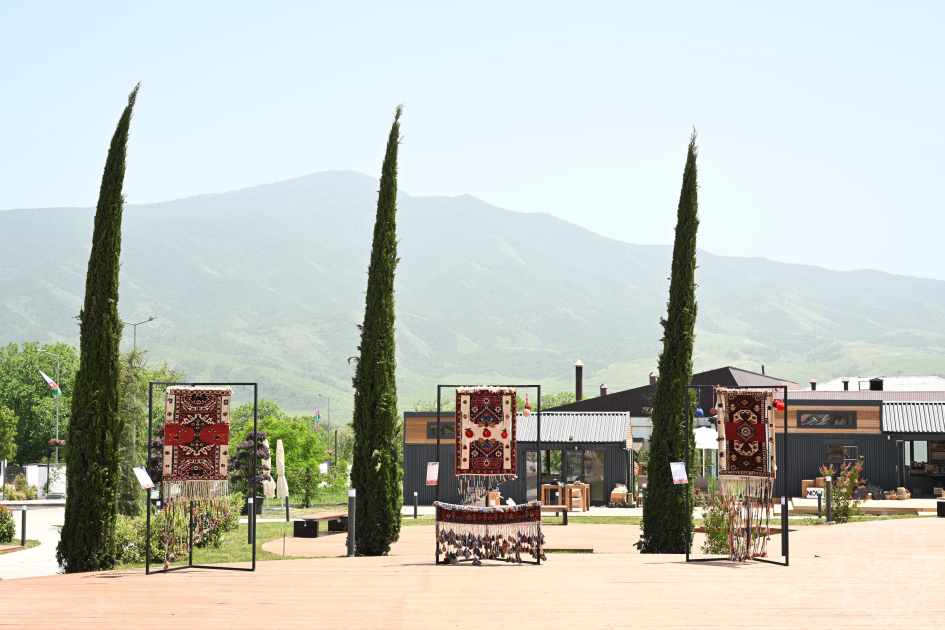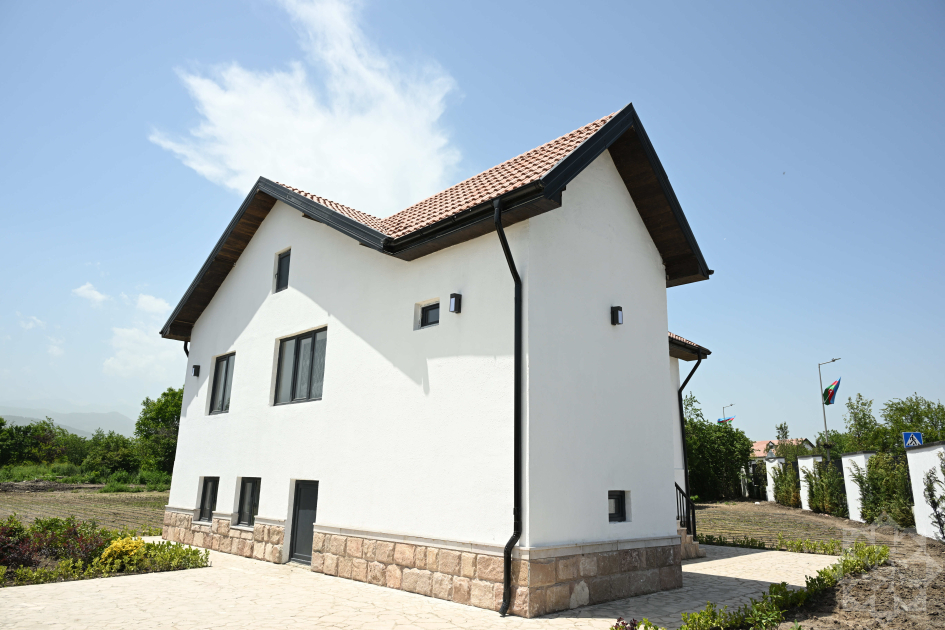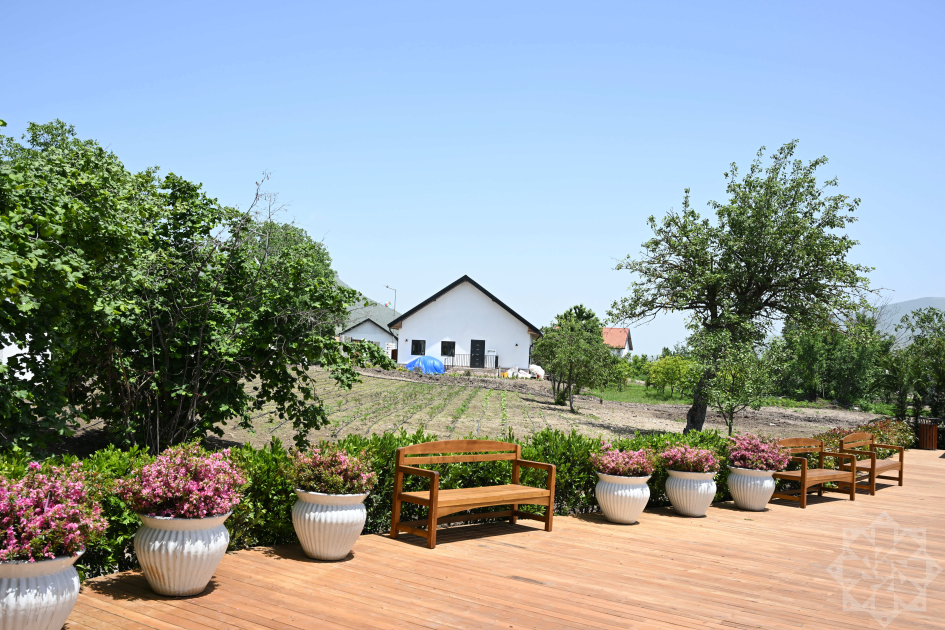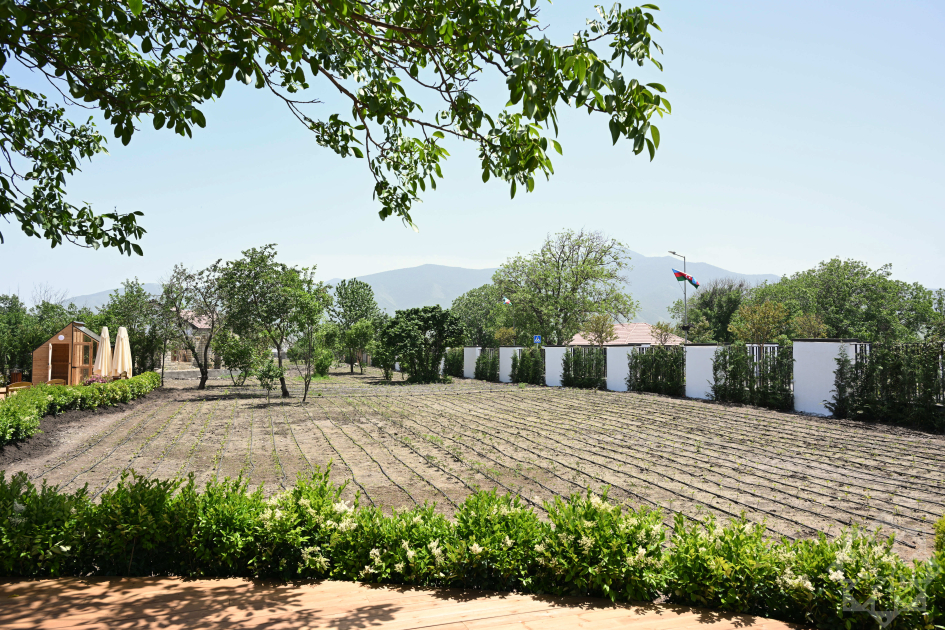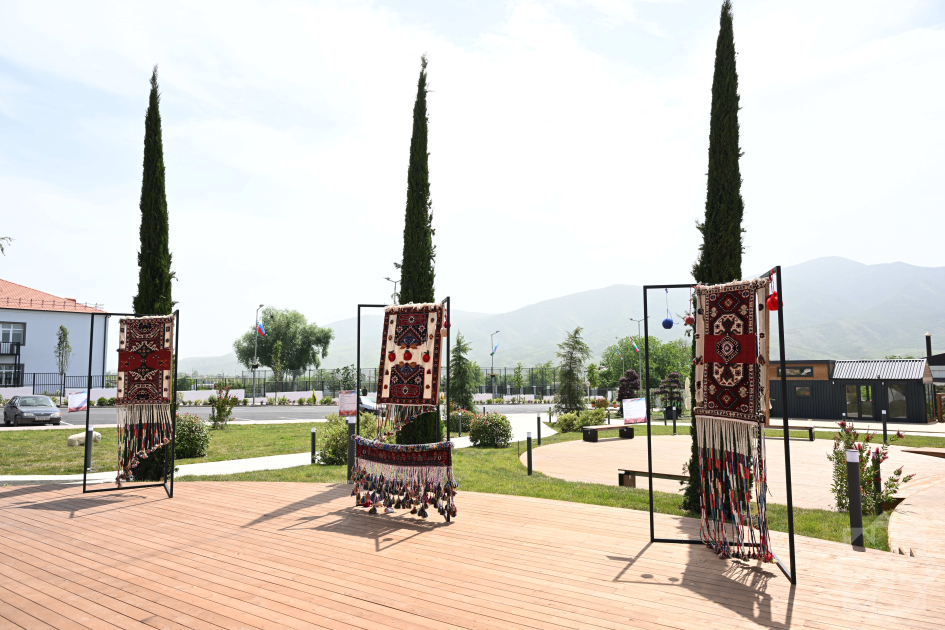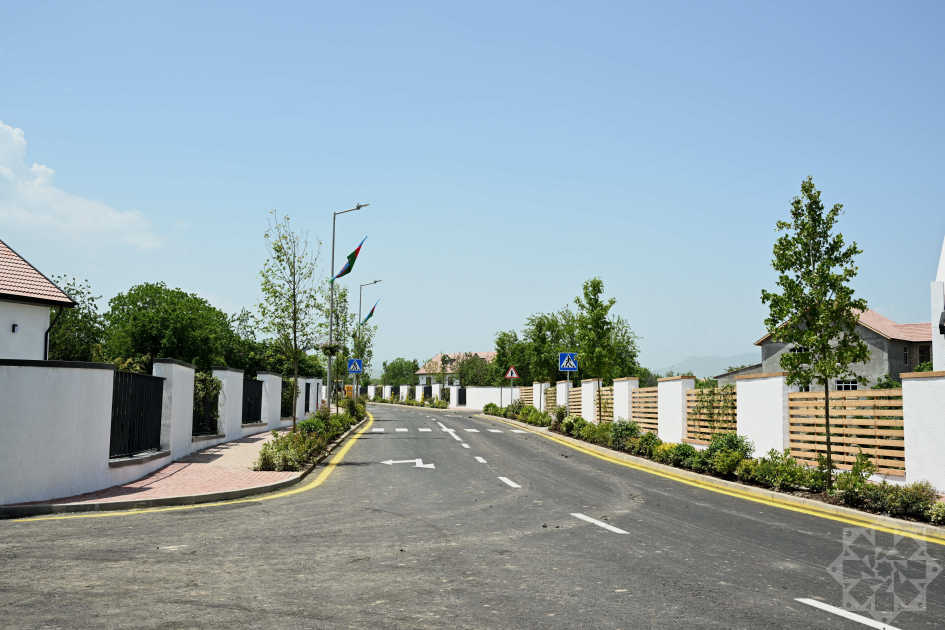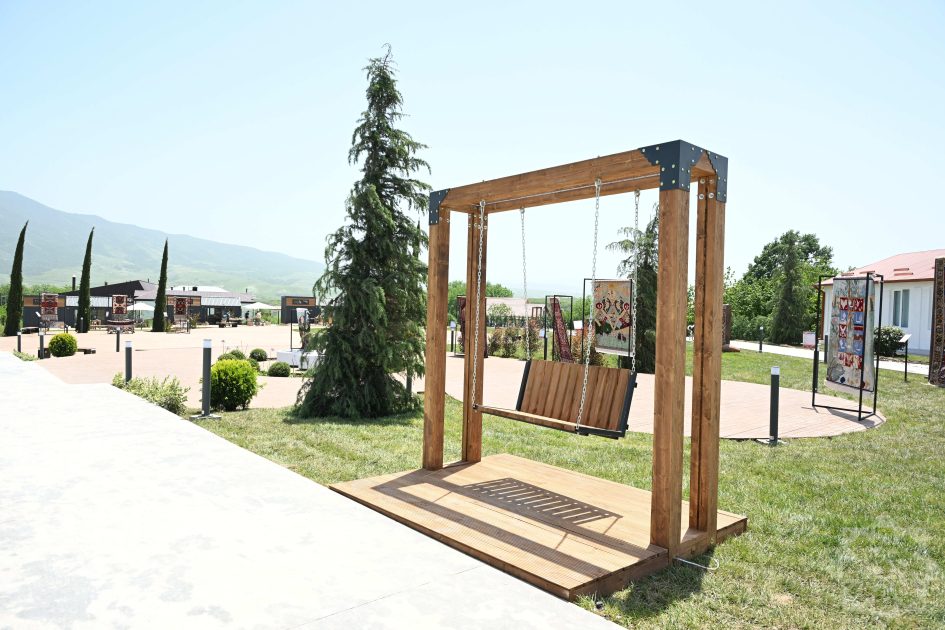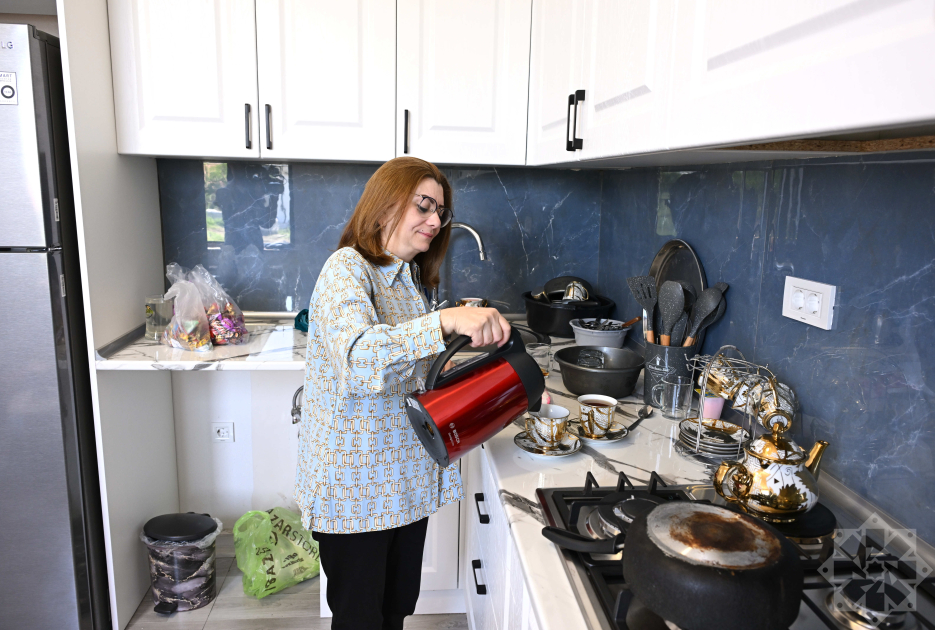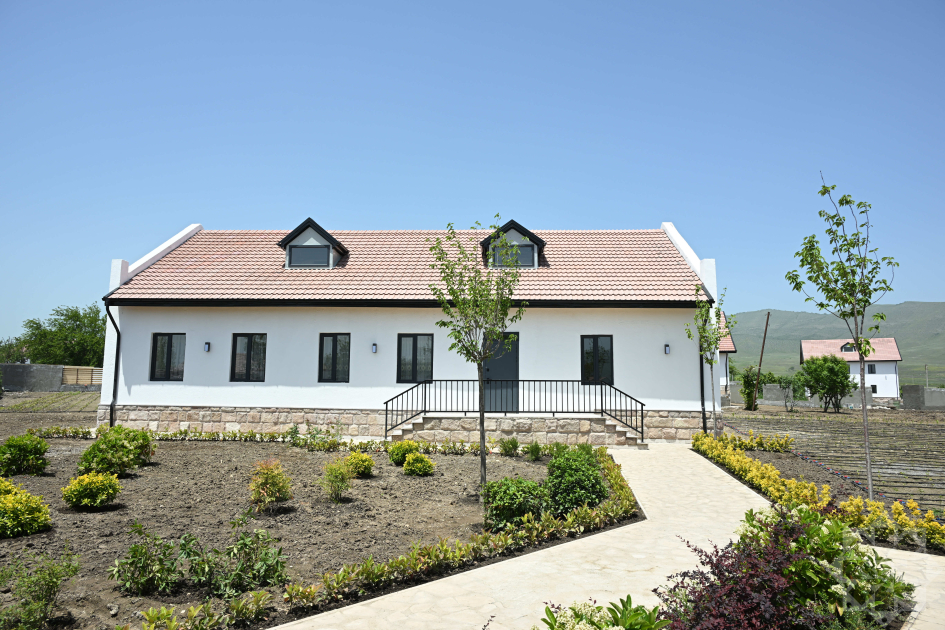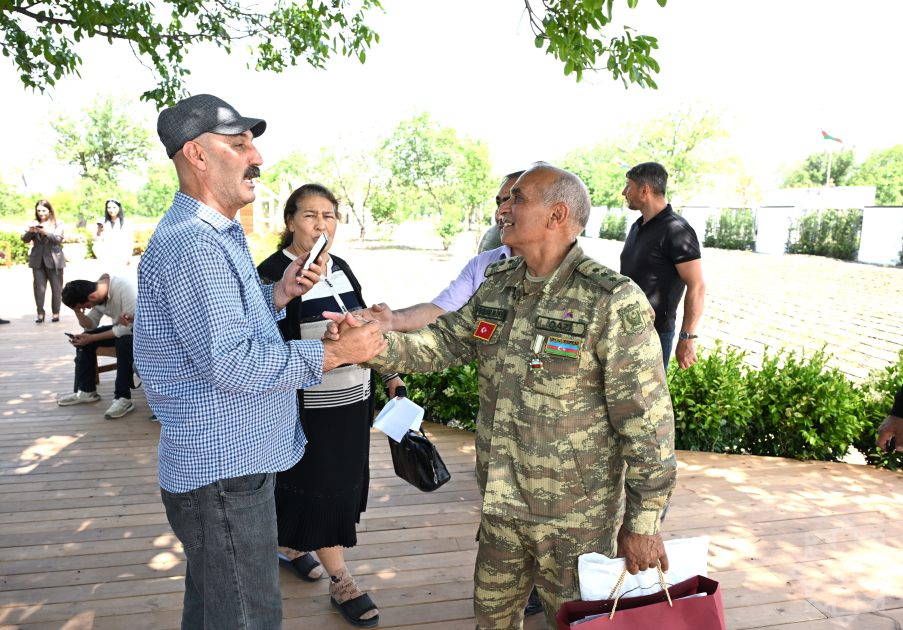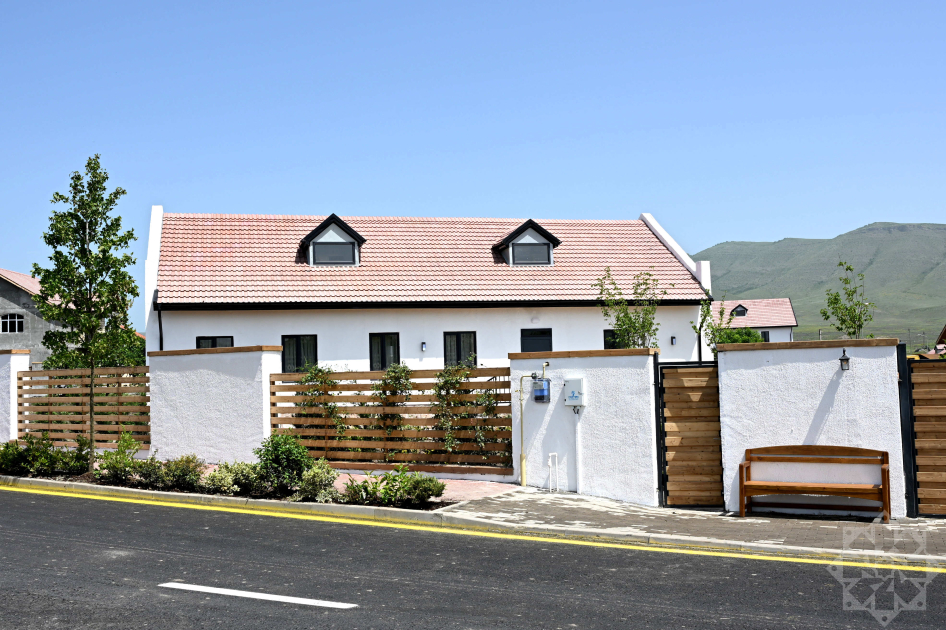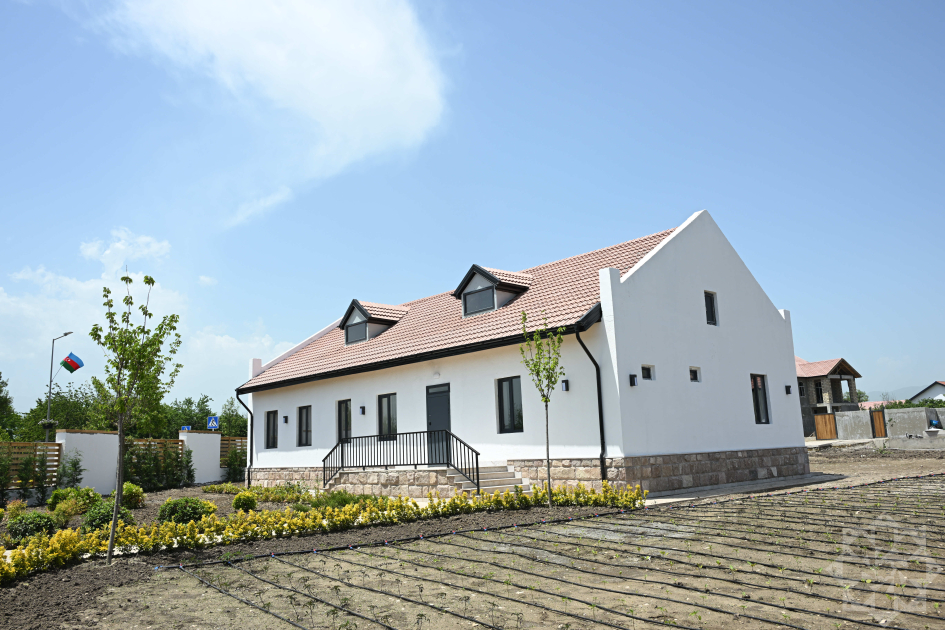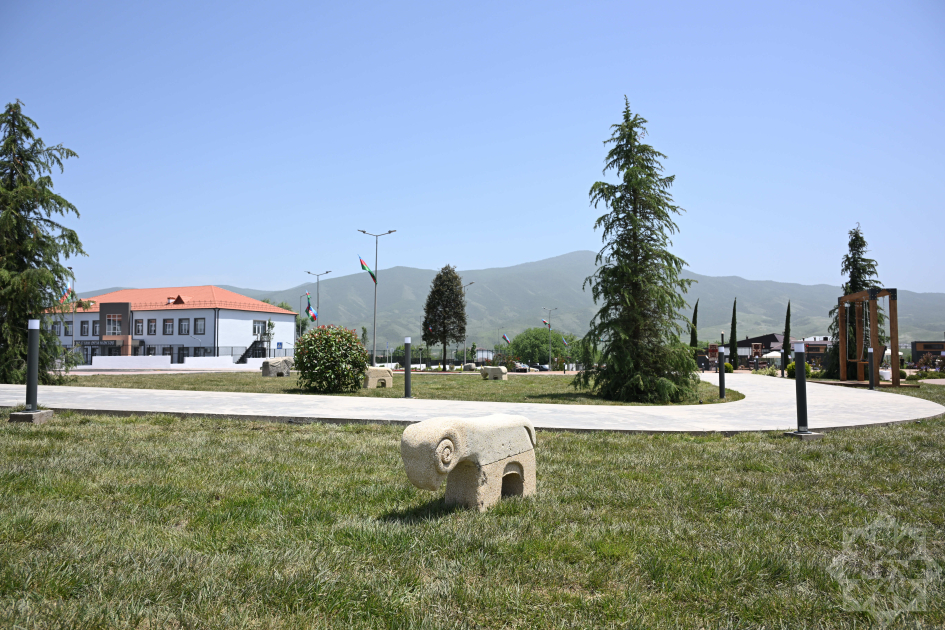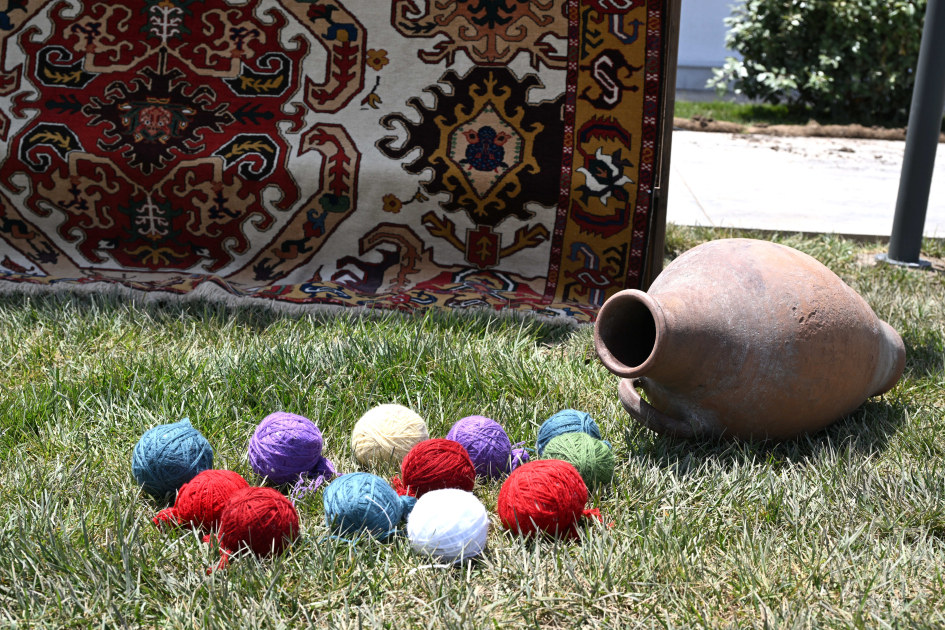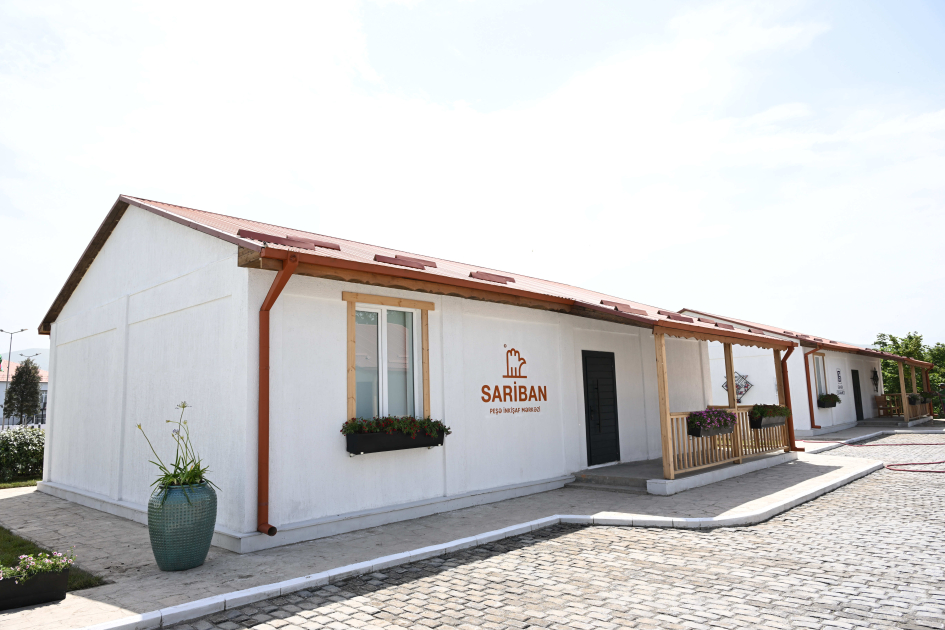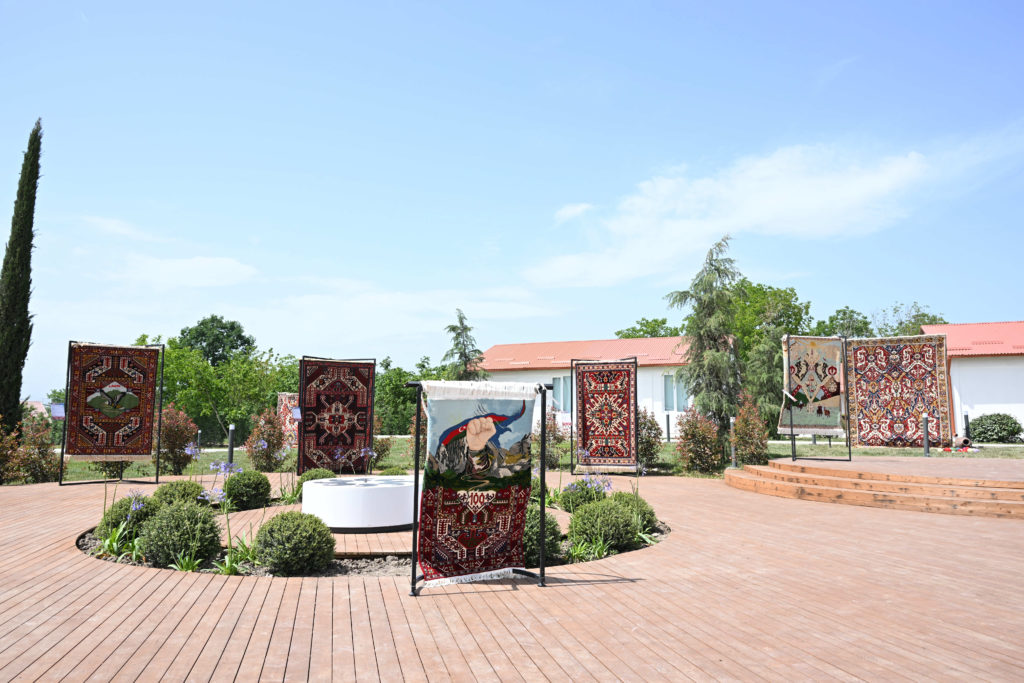Khojaly, May 29, C. Rüstəmov, Photo A. Ibrahimov, AZERTAC
May 28, 2024. A spring day… After 32 years of exile and suffering from genocide, the people of Khojaly have begun to return to their homes and warm hearths.
Just as in Zangilan, Fuzuli, Lachin, and Shusha, the page of the Great Return to Khojaly is now being turned, and this page is being written with the joy of the people of Khojaly who have not forgotten the pain of past years…
We present the report from our correspondent in Khojaly.
Khojaly, remembered as a city of genocide, is now being resurrected. Soon, the streets of this city will again echo with the voices of children, and the sounds of celebration will come from the homes; weddings and festivities will be held. Just 32 years ago, Khojaly was shrouded in darkness, but now every house is brightly lit.
This city was rebuilt in just 8 months. It is a miracle! And it is also a testament to the strength of the Azerbaijani state. President Ilham Aliyev, immediately after the anti-terror operation, gave a special order to restore Khojaly, and the task was successfully carried out. Incidentally, we have repeatedly witnessed how our president celebrates his birthday and important national days among the people, bringing them good news. The first resettlement to Khojaly on Independence Day is a continuation of this beautiful tradition. Two years ago, on Independence Day, Aghali was resettled, last year it was Lachin, and this year Khojaly greeted its new residents.
Khojaly is being built rapidly. From workers to high-ranking officials, everyone is working wholeheartedly. It seems that everyone considers it their duty to rebuild this city in memory of the victims of the genocide.
A Memorial Complex related to the genocide is also being created here. During a recent meeting with the residents of Khojaly, President Ilham Aliyev mentioned that the creation of this Memorial Complex had been discussed for many years, and even a location had been chosen near the “Mother’s Scream” monument in Baku, and a project had been prepared. “However, every year, I did not give my final approval. Because I felt in my heart that this Memorial Complex should be built in Khojaly, and that is what happened. We brought that project, and on February 26, the foundation of the Khojaly Memorial Complex was laid in Khojaly along with the people of Khojaly, and it will be built here. The whole world will see what Armenian barbarity is. This is the truth, and everyone should know it.”
The Master Plan for Khojaly, the administrative center of Khojaly district, was developed by local urban planning experts from the State City Planning and Architecture Committee (Azərdövlətlayihə State Main Project Institute and Baku State Project Institute) under their commission.
This city, located along the Aghdam-Khankendi-Shusha route, will play the role of a sustainable, developing regional center and strategic residential settlement. The existence of an international airport, as well as republic-level automobile and railroads passing through the city, will turn Khojaly into a convenient point for both business and tourism. Its proximity to industrial, educational, and cultural centers, as well as its rich historical heritage, will contribute to the parallel development of the city in various directions.
The Master Plan is based on conceptual approaches like “smart city” solutions, sustainable economy and environment, the use of “green energy,” and a sustainable, balanced human-centered urban environment. This includes energy-efficient green buildings, solar-powered street lighting, zero-carbon emission production, electric energy refueling stations, integrated engineering infrastructures, and smart-managed irrigation systems.
Khojaly city has been zoned based on the preservation and restoration of the existing planning structure, including the development of new residential areas. Over the next 20 years, the city area is expected to expand from 610 hectares to 1,290 hectares, and its population is projected to grow from 9,100 to 12,000. The city’s geographic location and natural resources will ensure quality living opportunities in close contact with nature and an active social life.
The restoration of Khojaly’s historical appearance is planned through the comprehensive renovation of individual residential houses with yards in the city’s naturally green areas. Additionally, the Master Plan proposes the construction of multi-functional zones, multi-apartment buildings, pre-school and secondary education institutions, hospitals, cultural, tourism, and other public facilities, as well as the Khojaly Genocide Memorial and the Flag Square, which will be part of the complex that includes the Museums of Occupation and Victory.
Thanks to Khojaly’s favorable natural-geographical conditions, there are vast opportunities for agriculture and livestock. Considering the importance of the agricultural sector in the city’s economy, the Master Plan designates 91 hectares for an agropark. Additionally, the southern part of the city is proposed to have 88 hectares for industrial use. All these initiatives will contribute to the sustainable employment of the population.
Khojaly, an ancient settlement, is also distinguished by its rich historical heritage and world-renowned archaeological sites. In order to protect these sites, which were severely damaged during the occupation, the Master Plan proposes the creation of an archaeological park covering more than 50 hectares. This will promote the development of archaeological tourism and provide more people with information about Khojaly’s ancient history.
